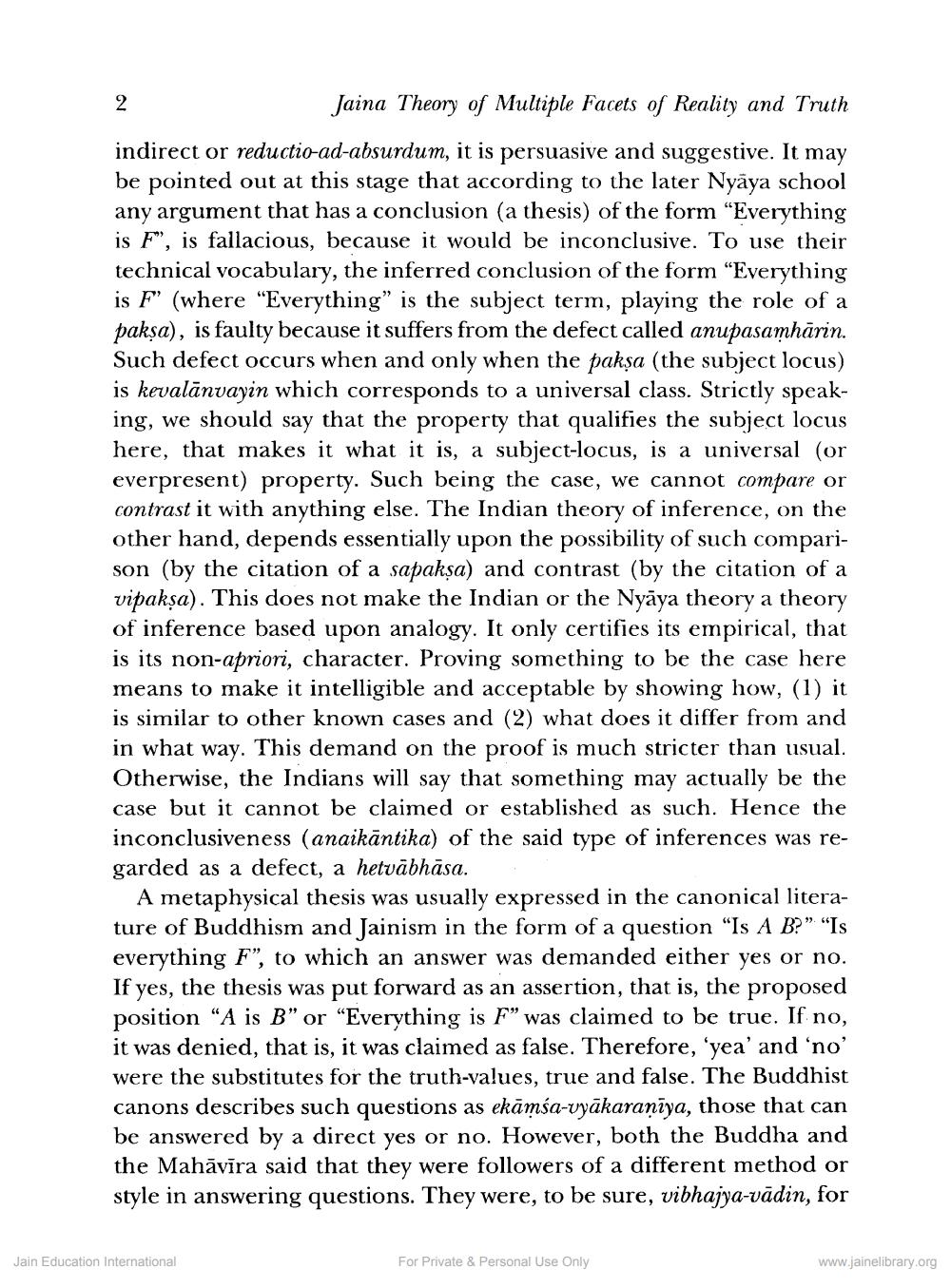________________
Jaina Theory of Multiple Facets of Reality and Truth
indirect or reductio-ad-absurdum, it is persuasive and suggestive. It may be pointed out at this stage that according to the later Nyaya school any argument that has a conclusion (a thesis) of the form "Everything is F", is fallacious, because it would be inconclusive. To use their technical vocabulary, the inferred conclusion of the form "Everything is F" (where "Everything" is the subject term, playing the role of a paksa), is faulty because it suffers from the defect called anupasamhārin. Such defect occurs when and only when the pakṣa (the subject locus) is kevalānvayin which corresponds to a universal class. Strictly speaking, we should say that the property that qualifies the subject locus here, that makes it what it is, a subject-locus, is a universal (or everpresent) property. Such being the case, we cannot compare or contrast it with anything else. The Indian theory of inference, on the other hand, depends essentially upon the possibility of such comparison (by the citation of a sapakṣa) and contrast (by the citation of a vipakṣa). This does not make the Indian or the Nyaya theory a theory of inference based upon analogy. It only certifies its empirical, that is its non-apriori, character. Proving something to be the case here means to make it intelligible and acceptable by showing how, (1) it is similar to other known cases and (2) what does it differ from and in what way. This demand on the proof is much stricter than usual. Otherwise, the Indians will say that something may actually be the case but it cannot be claimed or established as such. Hence the inconclusiveness (anaikāntika) of the said type of inferences was regarded as a defect, a hetväbhāsa.
2
A metaphysical thesis was usually expressed in the canonical literature of Buddhism and Jainism in the form of a question "Is A B?" "Is everything F", to which an answer was demanded either yes or no. If yes, the thesis was put forward as an assertion, that is, the proposed position "A is B" or "Everything is F" was claimed to be true. If no, it was denied, that is, it was claimed as false. Therefore, 'yea' and 'no' were the substitutes for the truth-values, true and false. The Buddhist canons describes such questions as ekāmśa-vyākaraṇīya, those that can be answered by a direct yes or no. However, both the Buddha and the Mahāvīra said that they were followers of a different method or style in answering questions. They were, to be sure, vibhajya-vādin, for
Jain Education International
For Private & Personal Use Only
www.jainelibrary.org




